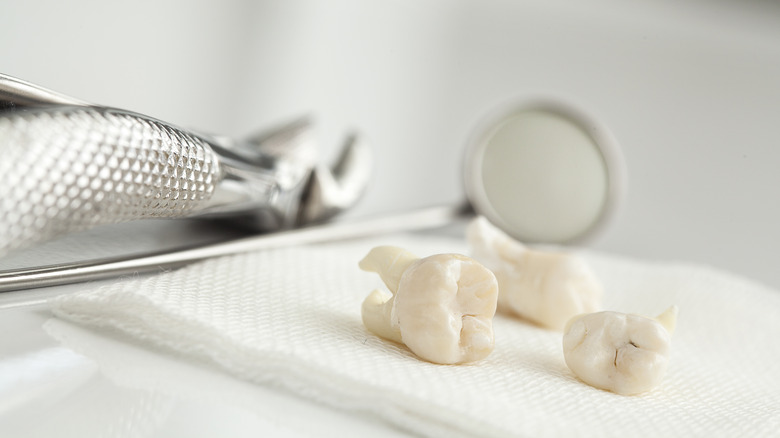What To Expect When Getting Your Wisdom Teeth Removed
Throughout your life, your body goes through many physical changes. One such change that occurs during your late teens and early 20s is the appearance of wisdom teeth. They are the final set of molars appearing in the back of your mouth, according to the American Dental Association (ADA). These teeth don't have any special role except in helping you in the chewing process. But at times, they may develop cavities or cause pain and may need to be removed.
Pain might develop for many reasons. At times, the wisdom teeth don't grow properly and are unable to settle in the gums. As a result, their abrupt position may trigger pain when they push against the neighboring teeth, notes the ADA. Another reason some people have wisdom tooth pain is that food lodges in the gap between the teeth and causes a bacterial infection. You may need to go for wisdom tooth removal to ease the ache.
What you need to know about wisdom tooth removal
Wisdom tooth removals may be non-surgical or surgical, depending on the position of the tooth (via Caputo Dental). If the tooth is visible, the dentist may simply extract the tooth using forceps under the influence of local anesthesia. This entire process may take about 20 to 40 minutes, with the actual act of removal generally taking between 3 and 15 minutes per tooth, explains Animated Teeth.
The surgical procedure should take no more than 45 minutes, per WebMD. You will be given anesthesia before the surgery. Your dentist will start with a cut on the gum to reach the tooth, before removing any bone that gets in the way, according to Mayo Clinic. Then with the help of the appropriate tools, they will either extract the tooth in one go, or break the tooth into several parts for smooth removal. Finally, the crushed particles will be cleaned out, and the wound will be sealed using stitches.
After your extraction, be sure to follow your dentist's instructions for aftercare to avoid complications like dry socket.


